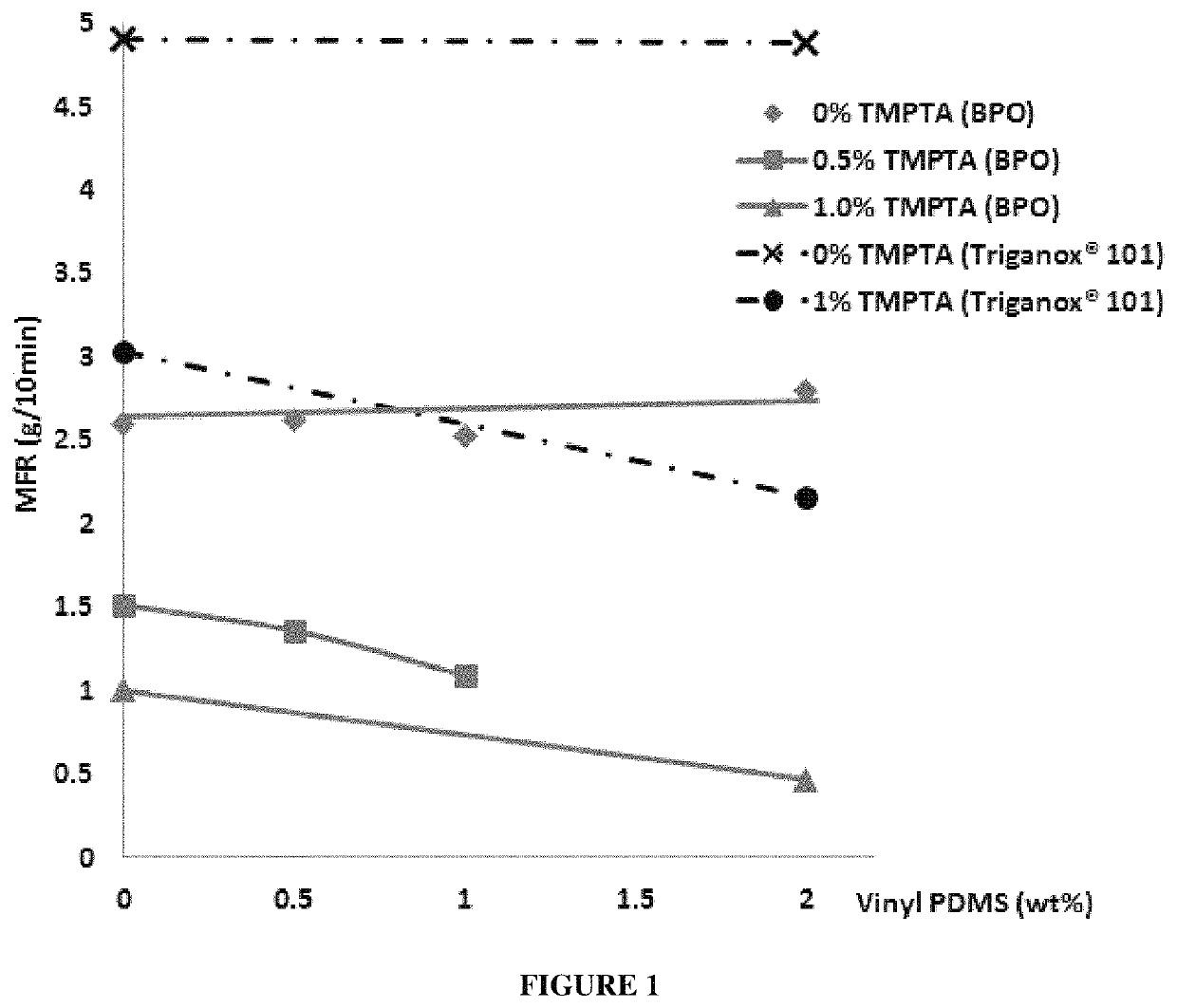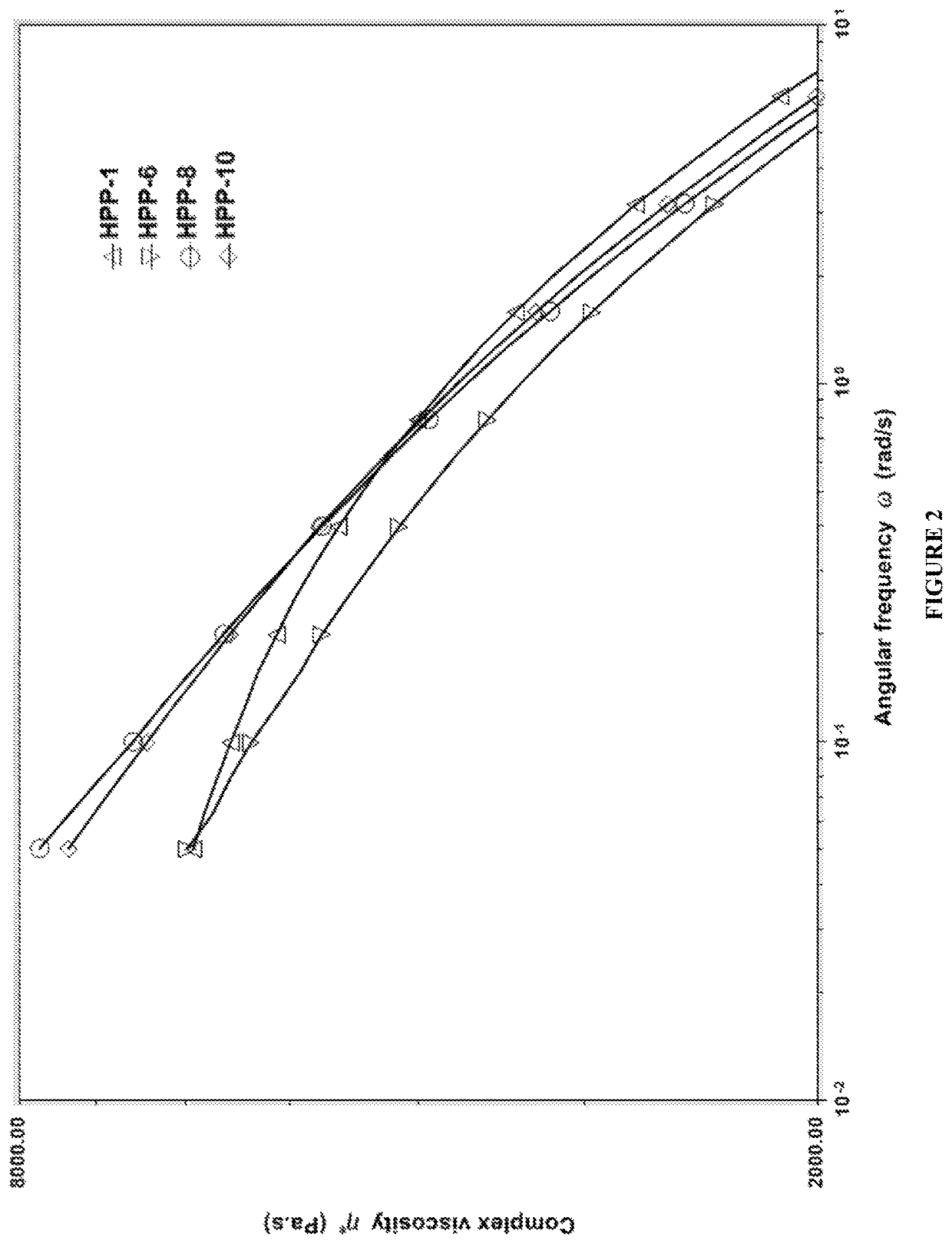Process for preparing high melt strength polypropylene
a polypropylene and high melt strength technology, applied in the field of high melt strength polypropylene preparation, can solve the problems of poor processability in the molten state, poor melt strength of polypropylene, non-uniform cellular structure, etc., and achieve the effect of refining process economy and high melt strength
- Summary
- Abstract
- Description
- Claims
- Application Information
AI Technical Summary
Benefits of technology
Problems solved by technology
Method used
Image
Examples
examples
[0039]The details of the invention will further be explained by way of examples which do not limit the scope of invention. Each component in the formulations as shown in the examples are given in ppm or percentage by weight unless otherwise specified.
[0040]Formulation: Polypropylene homopolymer (i.e. HPP), benzoyl peroxide (i.e. BPO), 2,5-Dimethyl-2,5-di(tert-butylperoxy) hexane (i.e. Triganox® 101), vinyl terminated poly(dimethylsiloxane) (i.e. vinyl PDMS, Mw=25,000 g / mol), trimethylolpropane triacrylate (i.e. TMPTA), DHT-4V (i.e. neutralizer), and B215 (i.e. antioxidant).
Procedure
[0041]DHT-4V (300 ppm based on the total mixture for reactive modification) and B215 (1500 ppm based on the total mixture for reactive modification) were added and mixed uniformly with polypropylene homopolymer resin. The mixture was blended with variable concentrations of vinyl poly(dimethylsiloxane) (i.e. termed as branching agent), trimethylolpropane triacrylate (i.e. termed as coagent), and either ben...
PUM
| Property | Measurement | Unit |
|---|---|---|
| temperature | aaaaa | aaaaa |
| melt flow rate | aaaaa | aaaaa |
| melt flow rate | aaaaa | aaaaa |
Abstract
Description
Claims
Application Information
 Login to View More
Login to View More - R&D
- Intellectual Property
- Life Sciences
- Materials
- Tech Scout
- Unparalleled Data Quality
- Higher Quality Content
- 60% Fewer Hallucinations
Browse by: Latest US Patents, China's latest patents, Technical Efficacy Thesaurus, Application Domain, Technology Topic, Popular Technical Reports.
© 2025 PatSnap. All rights reserved.Legal|Privacy policy|Modern Slavery Act Transparency Statement|Sitemap|About US| Contact US: help@patsnap.com


